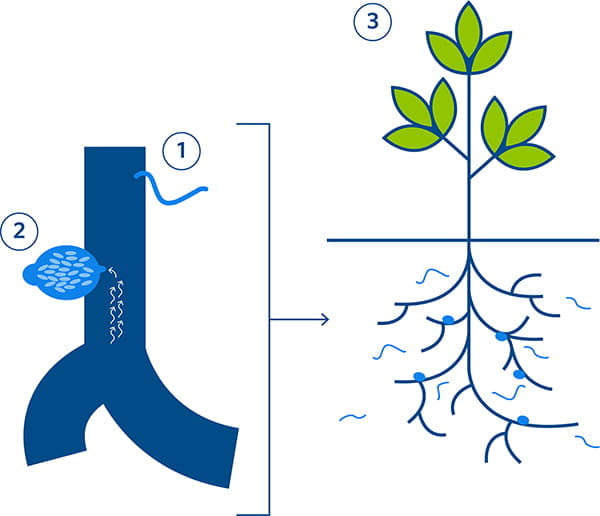Nematodes are one of the largest causes of crop damage and yield loss and the failure to control their impact is one of the main yield eradicating factors for growers.
Also known as roundworms, nematodes are simple vermiform animals with long, narrow threadlike bodies. Just one handful of soil can contain more than a million of them, and most are thinner than a human hair and cannot be seen by the naked eye.
Over 4,000 species feed on plants where they usually invade the roots – although some feed on bulbs, stems, leaves or flowers.
Estimates put the cost to growers at USD 360 billion per year
Unseen damage
Nematodes feed on plants using what is called a stylet – a sharp, needle-like structure in their mouth – to pierce through the cell wall of the plant.
When they invade the plants root systems, the root system is then no longer able to withdraw sufficient water or nutrients from the soil and, in worst-case scenarios, can cause the plant to die.
Feeding nematodes reduce water intake and remove vital nutrients from the plant:
Proven protection against nematodes
To combat nematodes, growers have traditionally used chemical nematicides. However, along with growing environmental concerns, these solutions are becoming increasingly ineffective.
Bionematicides on the other hand can contain bacterial solutions that are strong root colonizers, creating a physical and biochemical barrier.
Chr. Hansen's solution produces results that are consistent with chemical nematicides – and gives us amazing yield increases in sugarcane.
Grower, Brazil
The microbes feed on the plant exudates reducing the signaling molecules that attract the nematodes and produce active metabolites which are organic molecules, distracting the nematodes from feeding on the roots and protecting the plant throughout its lifecycle.
This results in significantly less hatching and infiltration of nematodes. Trial studies undertaken with our partners have revealed a reduction in juveniles, females and eggs of up to 90%.
Our bionematicides are available for a wide variety of crops and can also be combined with different control measures through an integrated pest management approach.

